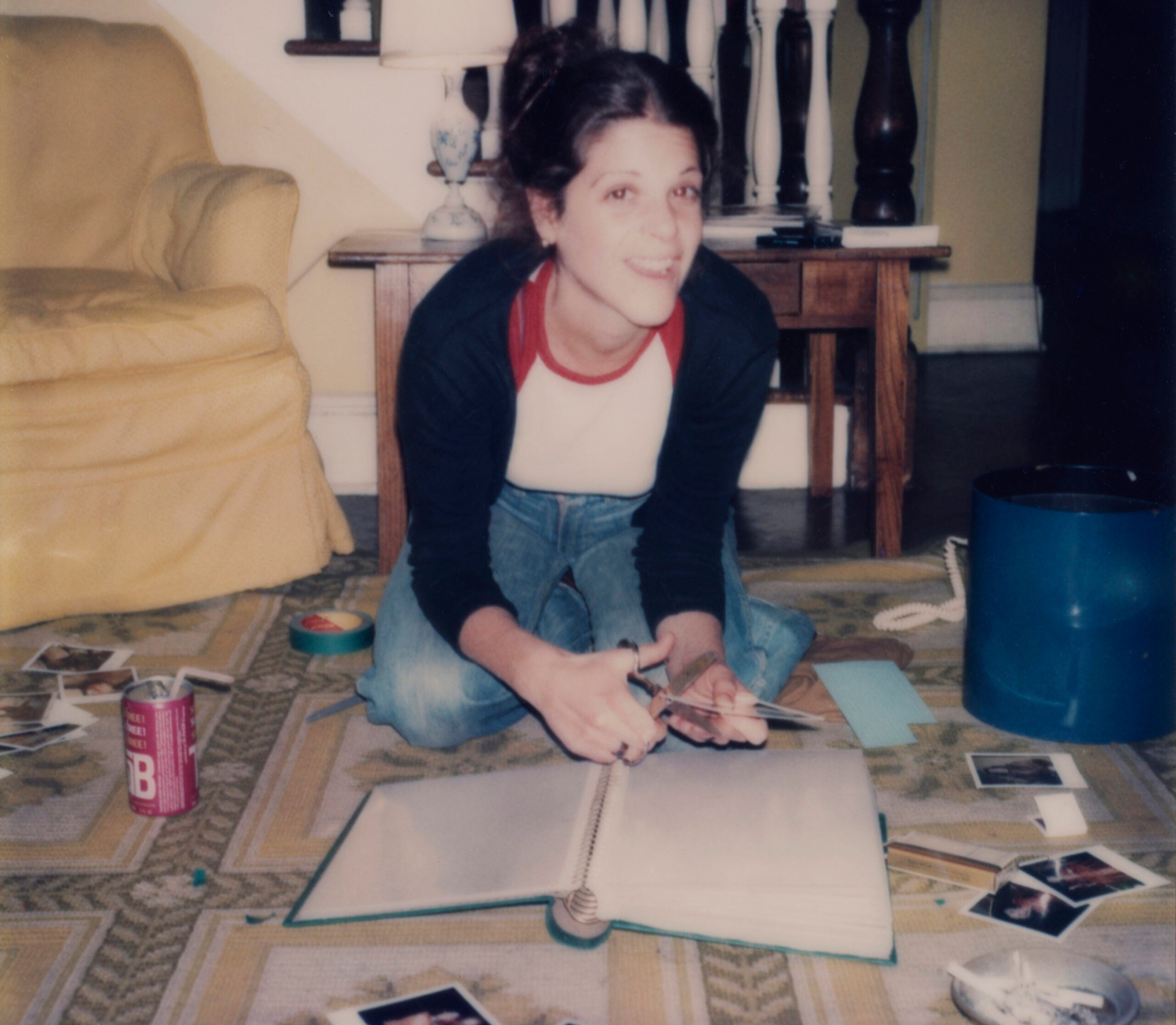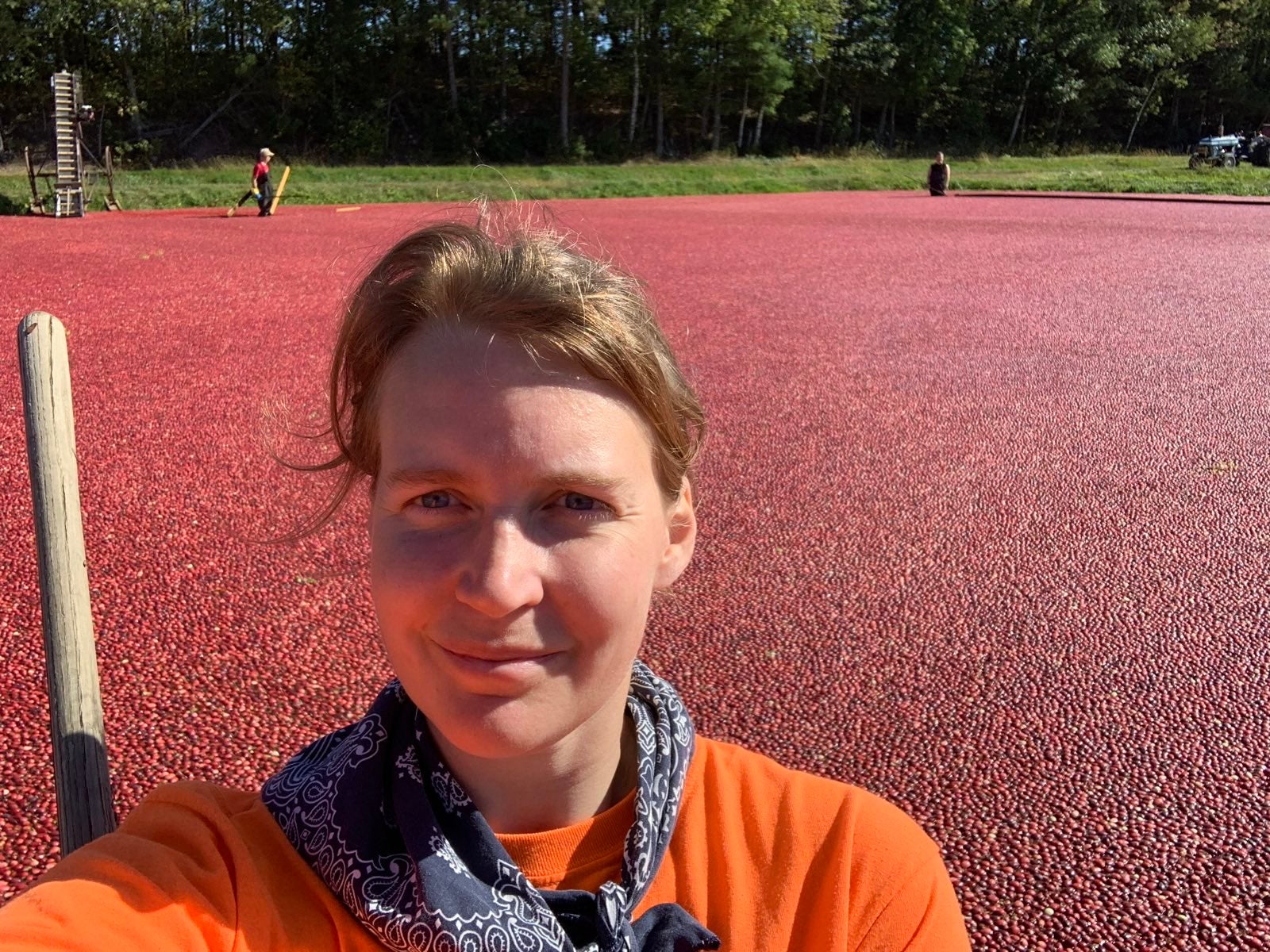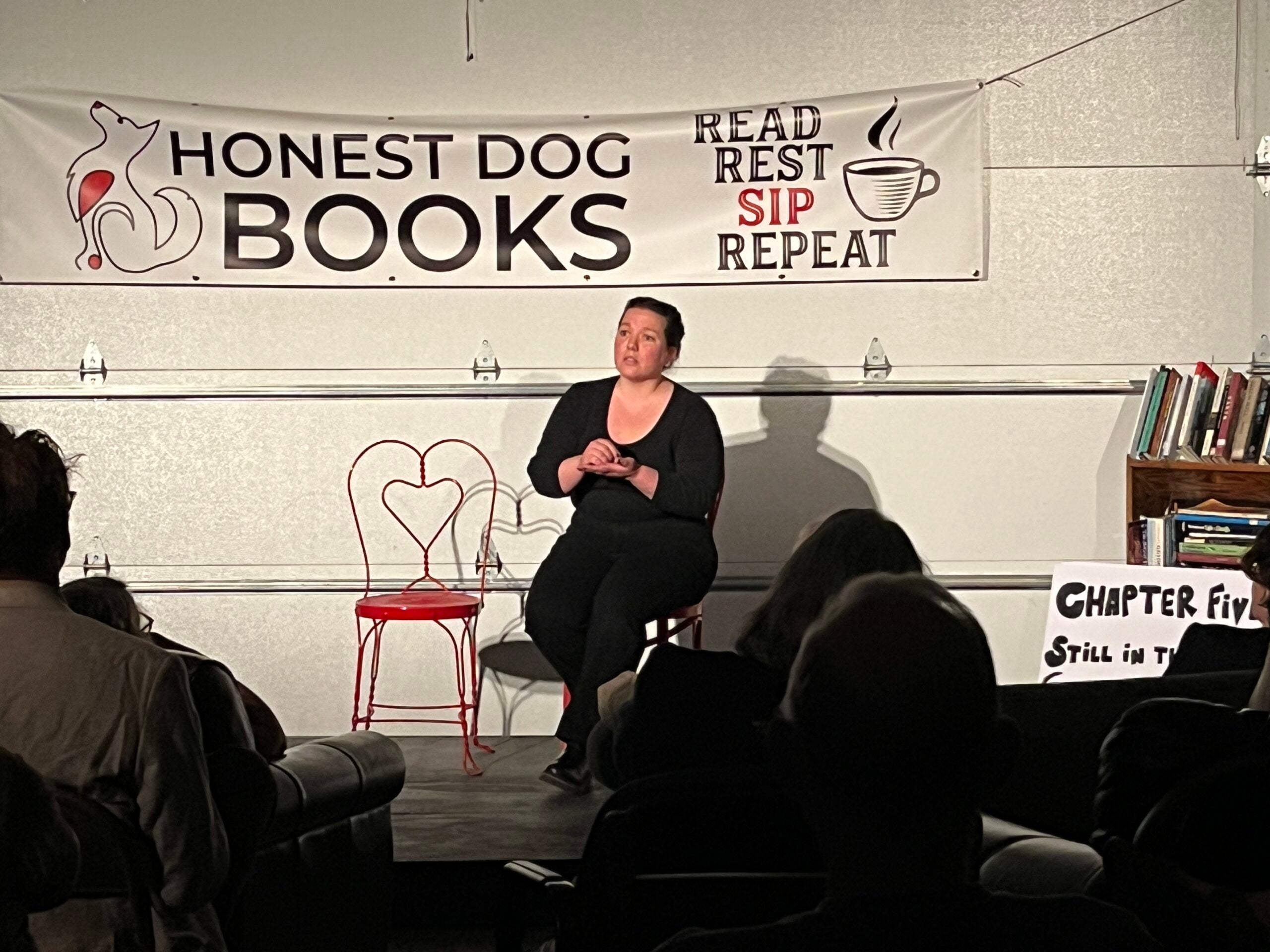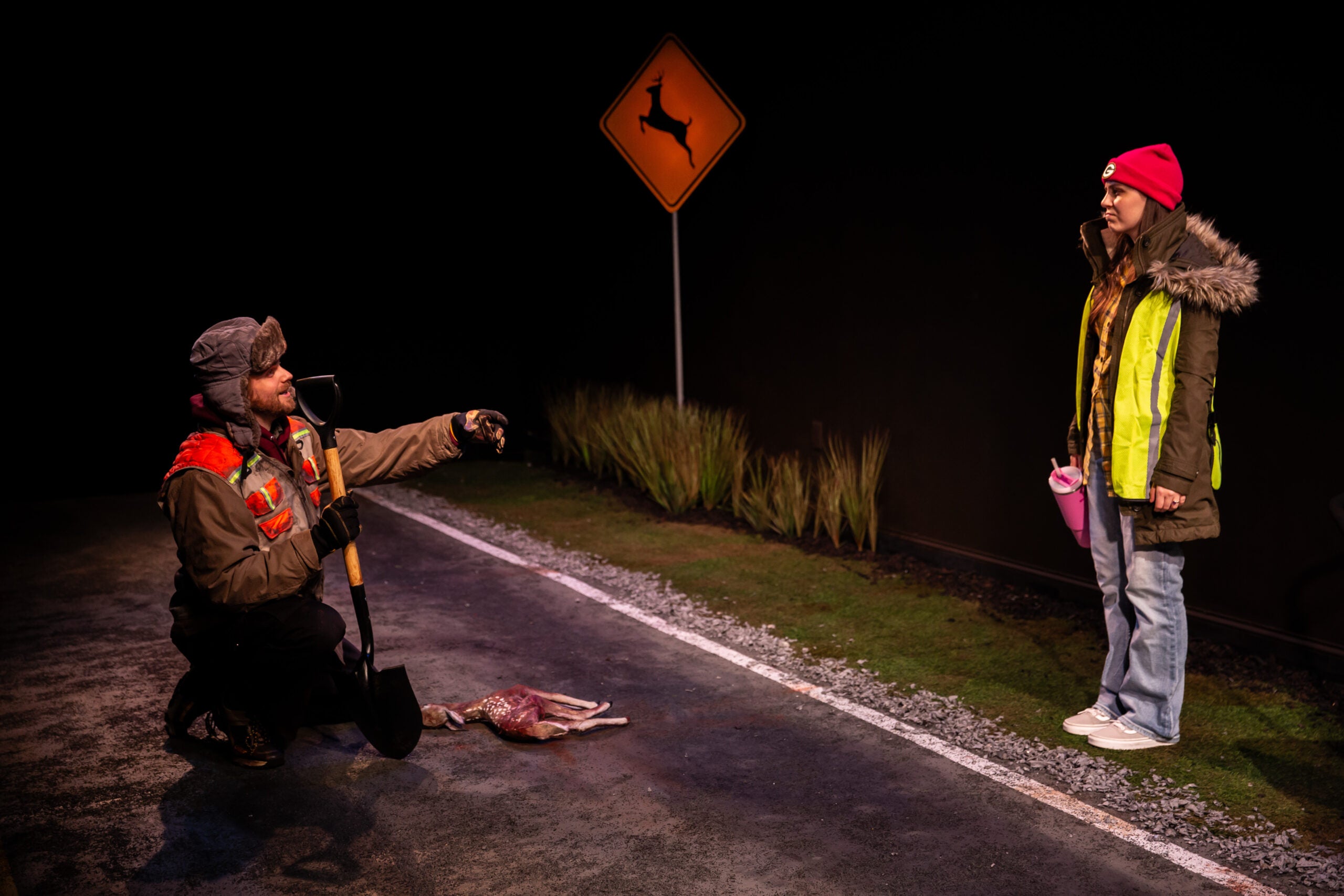Comedian Kevin Allison tells us how taking a risk led to a hit podcast. Plus, journalist Matt Taibbi explains why the news can be hazardous to your health. And filmmaker Lisa D’Apolito puts a lens on the beloved comedian Gilda Radner in her documentary, “Love, Gilda.”
Featured in this Show
-
Comedian Kevin Allison On How Taking Risks Leads To Authenticity (And A Hit Podcast)
Kevin Allison is a comedian, writer and actor. He’s also the man behind the hit podcast, “RISK!“
The show’s tagline is “True stories people never thought they’d dare to share.”
Allison’s also edited and written an introduction for a book of the same name, “RISK!: True Stories People Never Thought They’d Dare to Share,” which features 37 of the most popular stories from the podcast.
Allison enjoyed early success as a writer and actor for MTV’s sketch comedy series, “The State,” which aired on MTV in the early 1990s.
“But as soon as the group broke up and we lost our TV show in 1996, I spent 12 years just not knowing how to build a solo career,” Allison told WPR’s “BETA.” “I would go out on stage and play kooky, crazy characters and no one ever seemed to respond to these characters I was doing. What it ultimately was was that I think my pieces were a little bit too artful, a little bit too written. Authenticity of some sort or another was somehow not breaking through. People thought my stuff was funny but for some reason, it wasn’t hitting a vein.”
In 2009, former fellow member of “The State,” Michael Ian Black, went to see one of Allison’s solo shows at San Francisco Sketchfest. After the show, Black told Allison he felt the audience really just wanted Allison to drop the mask, to just stop acting and tell his own true stories.
Allison replied that the very idea of doing that sounded scary to him.
“I said, ‘There’s too many parts of my personality that are complex. Like, you know, I’m so gay and yet I’m also so Midwestern and polite. And yet I can be really absurdist and sometimes really kinky.’ I said, ‘It feels too risky to be me up on stage.’ And he said, ‘That is the idea. If it feels risky, then you’re probably really opening up and saying something authentic. And an audience is likely to open up to you.’”
Allison admits Black actually gave him this kind of advice back when they were doing the MTV show.
“When you go back and start reconstructing specific incidents that had a real emotional impact on you in your life, you start to realize, ‘Oh, I’ve been relearning some of the same lessons over and over again.’ So really, it was the first time I heard it, not the first time I’d been told.”
Allison decided on the plane ride back to New York he would tell the riskiest true story he could think of on stage as soon as he got home. He soon learned his friend Margot Leitrman co-hosted a show called “Stripped Stories” at the UCB Theatre in New York City.
“So I decided to contact Margot,” Allison said. “And I said, ‘Listen, I want to tell a really risky story. So maybe I can tell the story about the time that I unsuccessfully tried prostituting myself when I was 23 years old before ‘The State’ ever got our TV deal.’ And she said, ‘Oh my God, that sounds great.’”
“But on the day of the show, a couple days later, I called her and I said, ‘I have to back out. I’m terrified. This just seems too risky.’ She said, ‘That’s great news.’ I said, ‘What?’ She said, ‘Oh my God, on the day of the show, because these are stories about people’s sex lives, people often like freak out the day of the show and say, ‘This is too personal, this is revealing too much, I feel like it’s too risky.” And she says, ‘If I can convince that person to do the show anyway, to face their fear and just do it, that’s the story that’s going to knock it out of the park that night.’”
So Leitman convinced him and he got up onstage and told his story about his unsuccessful effort to become a prostitute.
“And it was terrifying,” he said. “Like I went from moment to moment in the story, having all those inner critic voices in my head saying things like, ‘Oh, you sound so gay right now,’ or, ‘Ooh, you probably sound really Midwestern right now.’ You know, like all this stuff that doesn’t matter. And the audience just kept leaning more forward because I was just being myself. And I realized, ‘Oh my gosh, there is an emotional connection that I’m having with this room tonight that I haven’t had onstage since I don’t know when. Or ever.’”
Allison vividly remembers the response he received from audience members after the show.
“You know, I was used to people after shows saying to me, ‘Hey, that was funny.’ But now I was having people come up to me and say, ‘Gosh, I’ve never been through an experience like what you described but the emotions you described were so familiar to me.’ And, ‘Oh my God, that triggered a memory of a fight I got into with my dad and mom when I was in the seventh grade,’ or whatever it is,” Allison said. “When you tell a true story, if you’re really tapping into the most revealing thoughts and feelings you had in an intense moment in your life, it’s bound to open up and trigger associations for other people that are just as meaningful for them even if they’ve never been through anything like what you just described.”
He described his walk down Eighth Avenue after leaving the UCB Theatre that night as “really a transformational walk because during that walk, the whole show ‘RISK!’ started to occur to me.”
“I said, ‘Listen, I’ve been hearing this word ‘risk’ from Michael Ian Black and then from Margo and this is it, I think I’ve tapped into something here,’” he said. “I realized that there were shows where people did tell true stories, like ‘The Moth‘ or in a more journalistic way, ‘This American Life.’ But I also realized, ‘Oh my gosh, there’s this new format, podcasting, where you don’t have to censor yourself at all. It doesn’t have to be family friendly, you can talk about anything.’”
“So I knew there must be a niche that I could fill to create a podcast where people tell true stories they never thought they’d dare to share in public. And these stories can be hilarious, they can be horrifying, they can be beautiful and tear-jerking. As long as the person is going outside their comfort zone and speaking with the raw, real honesty that they would normally speak to their therapist with, for example.”
Allison will be hosting a live version of RISK! on Saturday, March 16 at the High Noon in Madison. If you’re interested, find more information here.
-
Journalist Matt Taibbi Explains How Following The News Can Be Hazardous To Your Health
Journalist Matt Taibbi is a contributing editor for Rolling Stone. He’s also the winner of the 2008 National Magazine Award for columns and commentary. His latest project is a serial online book called “Hate, Inc.” How, And Why The Press Makes Us Hate One Another.” He recently talked to WPR’s “BETA” about it.
These interview highlights have been edited for brevity and clarity.
What is the major theme of “Hate, Inc.?”
“The main theme that runs through the book is that we in the commercial media now are financially incentivized to wind people up and make them angry with each other. Whereas in the old days of media, back in the days when we had three networks and just a couple of newspaper chains, we had exactly the opposite dynamic in media. The idea was to make the audiences less wound up and actually more placid because we were trying to reach the widest possible audience,” Taibbi said. “Now what we do is we have a divided demographic where, you know, MSNBC goes after liberals, Fox goes after conservatives, and the easiest financial route to success is just making those groups angry with each other.”
How has the media industrial complex turned the news into sports?
“One of the things is that sports is a format that definitely works commercially, that the networks are familiar with. They know how to sell it, they know how to market it. And we’ve stolen a lot of things from how we cover sports and transplanted it on to presidential campaigning. You’ll see that a lot, especially on election nights, if you watch election coverage on the cable networks. You’ll see that the setup on the sets is almost exactly like a Sunday countdown show for the NFL. You’ll have one analyst from one team, one analyst from another team. And then there are people who make predictions about which team is going to win. And everything becomes about the horse race,” he said.
“We borrow a lot of the language and the stylistic aspects of sports coverage for things like debates, which are just chock-full of boxing metaphors from start to finish. And I think a lot of that is just a formula because it’s easier to train audiences to understand politics as something that they have to root for, as opposed to trying to train them to think in a nuanced way about a very, very difficult subject.”
How is following the news like smoking?
“This kind of content that we’re doing nowadays, is basically about monetizing anger. If you click on basically any news story through social media, it’s geared up to make you upset about something. And (President) Donald Trump is the perfect example of a political story that people just can’t have any neutral feelings about. They either love the guy and hate his enemies or they hate him. And so any story about basically anything involving Trump is going to get people furious. Then they’re going to read that, they’re going to go to social media, they’re going to argue with people about that, and they’re going to stay in this emotionally-amplified, heightened state of sort of anxiety all day long,” Taibbi said.
“That has an addictive effect, this has been talked about by people who’ve studied the way that social media platforms like Facebook and Twitter work. People become addicted to the dopamine rush of anger that they get from reading a news story. And we just sort of sociopathically crank this stuff out there and dump it on audiences without thinking about what it does to their mental health. But I think most people would agree that if they stopped following the news for any length of time, and you notice this when you go on vacation, that you’re just happier.“
“This product that we’re selling — we’re selling you your own rage, basically bottled and amplified — it’s emotionally destructive in the same way that cigarettes are physiologically destructive. And we don’t think about it as much.”
Does Taibbi think that writing so candidly about this connection may be hazardous to his health and his career?
“Actually, I found that writing about all this has been really therapeutic for me because I had all this bottled up for years because I’ve been struggling against it in the business. And my hope was in writing this and showing people how the business looks from the inside and what the thought process of a person who creates media content is, that people will be able to protect themselves from some of this a little bit, that maybe they would not get so upset about things that are designed to get them upset. So it’s helped me calm down a little bit. And I hope the book also helps people not take things so seriously,” he said.
What is the connection between the film version of Brett Easton Ellis’ novel, “American Psycho,” and the way we consume the news?
“There’s a scene where (the serial killer Patrick Bateman) and his friends are in an upscale restaurant in SoHo and they’re talking about the news that day. And they’re explaining to each other how much they care about homelessness. One of them talks about Sri Lanka and how all of the Sikhs are massacring Muslims. Of course, he gets it wrong. That’s part of the joke. But the idea is that the news in ‘American Psycho’ was just another consumer product that was part of his outward expression of normalcy whereas in fact, in the inside, he was crazy. But we do this a lot in America. We talk about the news as if knowing about it is doing something about it. And we think that by educating ourselves about how things are terrible in certain parts of the world or certain problems that are going on, that alleviates the guilt that we feel about not changing the world in the right way, whereas, in fact, in many cases, it’s like something that we wear.”
In “Hate, Inc.,” Taibbi writes: “I work in this business and don’t know whom to trust.” So how does he do his job?
“It’s very difficult. In the last couple of years, that whole segmented demographic problem has gotten I think so intense that I don’t know if even the most quote-unquote reputable newspapers are always accurately representing things or if they’re leaving things out because they’re afraid to lose their core audiences,” Taibbi said. “So I actually spend a lot of time now when I want to know about a news story, I just put on my journalist hat and start calling sources to ask them rather than read the news, which is kind of a sad thing. And I think that’s where we’re headed in the future is that people are going to increasingly turn to alternative sources because they’re going to not trust the traditional sources as much anymore.”
-
Gilda Radner Shares Her Own Legacy In 'Love, Gilda'
It is impossible to measure the legacy of comedian Gilda Radner. She was the founding member of the original “Saturday Night Live” cast (dubbed the “Not Ready for Primetime Players”) and created some of the show’s most iconic characters.
Executive Producer Lorne Michaels says Radner was the first cast member (along with Chevy Chase) that audiences really connected with.
She’s also an inspiration for modern day comedians including “SNL” cast members Maya Rudolph, Amy Poehler, Cecily Strong and Bill Hader.
Furthermore, her courageous and pioneering fight against ovarian cancer has transformed how we cope, educate and support families impacted by cancer with the launch of Gilda’s Club, a nationwide community of support centers.
“I just thought she had a really, really important legacy. Not only as an iconic female comedian, but also as somebody who really inspires people who are going through cancer,” filmmaker Lisa D’Apolito told WPR’s “BETA.”
D’Apolito was creating fundraising videos for Gilda’s Club when she was inspired to put together the documentary about Radner’s life and career for CNN Films entitled “Love, Gilda” released in 2018.
The documentary’s title references Radner’s warm signatures in letters to friends, families and fans, but also embraces the spirit of who she was.
“Love is the whole message of Gilda,” D’Apolito said. “Gilda was not just somebody who wanted to be loved, she was somebody who really loved.”
It isn’t only Radner’s love that permeates the film. It’s her voice. D’Apolito was given rare access to Radner’s personal archives of videotapes, audio tapes, photos, writings and journals. Radner’s best friend, Judy Levy, worked with D’Apolito to convince Radner’s brother in Detroit to share these private keepsakes.
The result is a remarkably moving documentary voiced by Radner herself.
“So once I heard her audio tapes, I was like ‘Oh my God, if Gilda could tell her story in her voice that would be amazing,’” D’Apolito said. “With a lot of audio work and a team of an amazing dialogue restorer, I think it worked in the end.”
One of the more poignant approaches D’Apolito employs in the film is handing this rarified material to the likes of Poehler, Hader, Rudolph, Strong and other comedians like Melissa McCarthy and having them read and react to it.
Radner was born to an affluent family in Detroit who began parenthood later in life. Her father was much older than her, but showered her in unconditional love.
“It was a family that humor was very, very important … so she was always entertaining her father,” D’Apolito says.
Radner’s father died when she was 14 and his death affected her greatly. Radner felt she was at a pivotal age, as a girl grows into womanhood, to lose her parent and experienced a kind of arrested development. This childlike innocence surfaces in many of the characters she would go on to create for “SNL.”
D’Apolito believes this loss also drove Radner to seek out this same kind of unconditional love throughout life.
“She was always looking for that love. Whether it was the love of an audience or the love of a person, but that was really Gilda’s quest, was to always find that sort of love,” she said.
After a failed marriage to musician and “SNL” band frontman, G.E. Smith, Radner met the love of her life, actor and comedian Gene Wilder, on the set of the 1982 film, “Hanky Panky.”
“Gilda adored him,” D’Apolito, who spent some time with Wilder before his death in 2016, said. “She wrote love stories to him. She talked about him all the time. She just adored him.”
On Monday, Oct. 20, 1986, Radner received a call from her internist, diagnosing her with stage 4 ovarian cancer. Her diagnosis was dire. She only had a few months to live, but Radner would live for two and half more years.
“She was sad until she went to this place called the Wellness Community, which is the founding basis of Gilda’s Club and she met other people with cancer. She was able to talk to people who were going through the same things that she was going through,” D’Apolitio said.
Radner was determined to bring awareness and exposure to cancer with celebrity and her humor. In 1988, she collaborated with her longtime friend and “SNL” writing partner, Alan Zweibel, for an appearance on his show, “It’s Garry Shandling’s Show.”
“I love the fact that Gilda was able to go back on television, was able to talk about cancer and had that moment,” D’Apolito said.
Radner died in May of 1989 at the age of 42.
D’Apolito’s film features incredible footage, shot by Wilder, of Radner’s time in the Wellness Community and her brave fight against cancer. After she died, Wilder would go on to found Gilda’s Club in her honor. There are now 18 centers across the country.
“There’s hundreds of thousands of people through the years that have been helped by these programs, so I think she has a pretty interesting legacy,” D’Aopolito said.
Episode Credits
- Doug Gordon Host
- Adam Friedrich Producer
- Doug Gordon Producer
- Steve Gotcher Technical Director
- Kevin Allison Guest
- Lisa D'Apolito Guest
- Matt Taibbi Guest
Wisconsin Public Radio, © Copyright 2025, Board of Regents of the University of Wisconsin System and Wisconsin Educational Communications Board.




